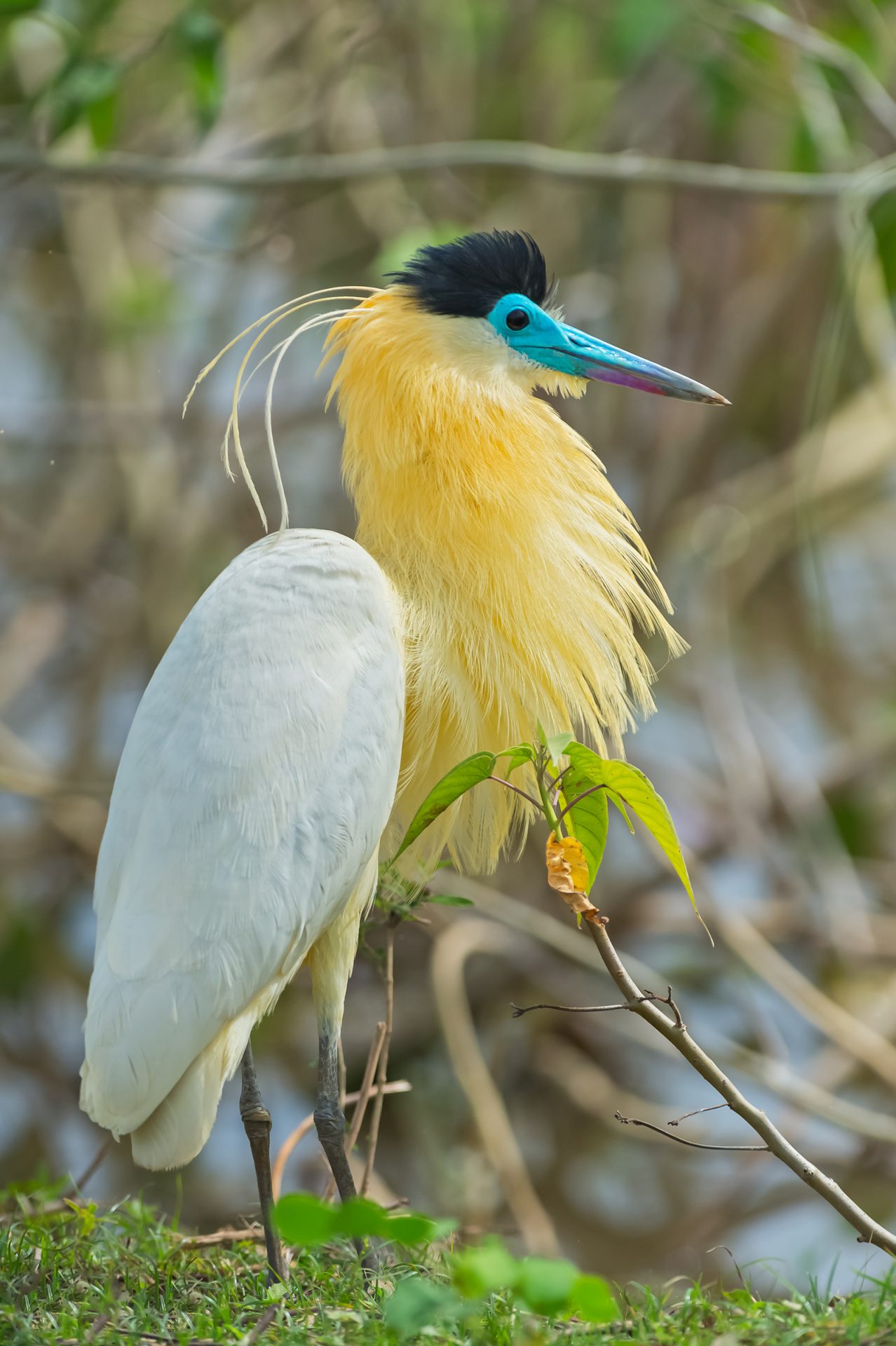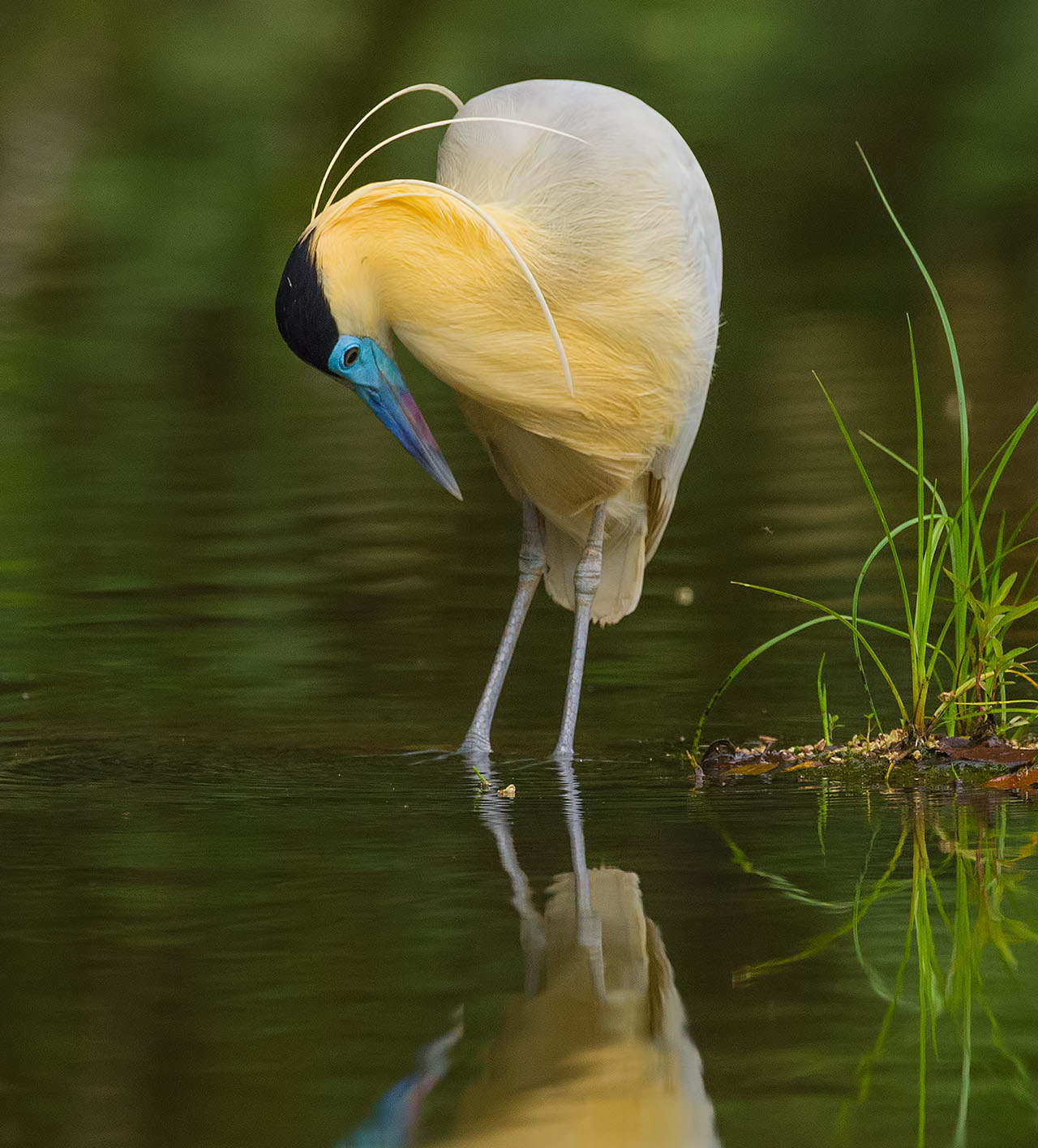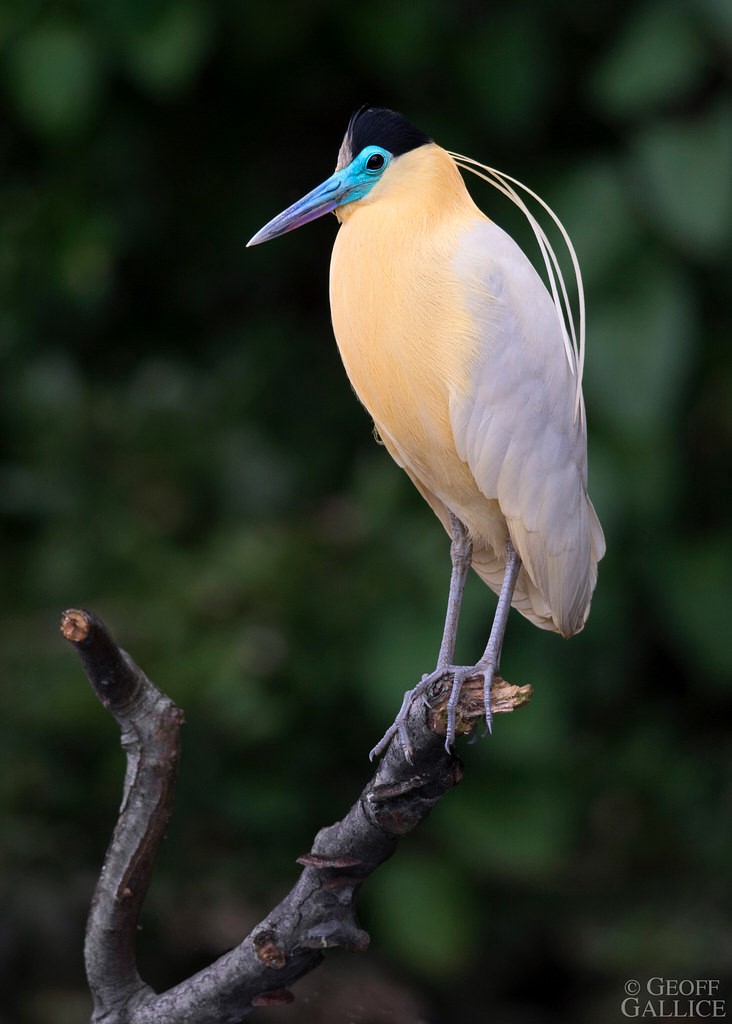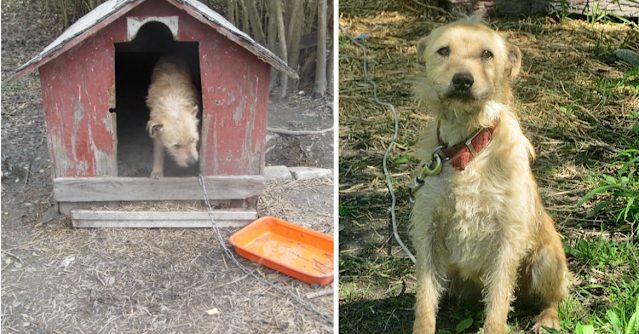One of the most unique herons of the Neotropics! The Capped Heron truly stands out on its own, as no other combines a brilliant sky-blue face and bill with a black crown. It further has a thick, cream-colored neck and body and whitish to light gray wings, and four or five long white plumes that extend off the back of its head. In flight, it is rather compact and appears small, chunky with a thick neck. It has rapid, choppy wingbeats. Males and females are similar, and young birds are also similar to the adults but have paler gray above; juvenile birds may have gray streaking on crown and shorter nuchal plumes.

The Capped Heron is always found in low densities throughout its wide range from central and eastern Panama throughout the Amazon basin. It inhabits swamps, riverways and small ponds primarily in the lowlands but has been recorded up to elevations of 900 meters. It is rather reliant on water and prefers to forage in less-vegetated water courses. It feeds on small fish, aquatic insects, tadpoles and frogs. When hunting, it spends up to half the time standing in a crouched position, then thrusts its neck and bill forward and lunges its body to catch its prey. It is very territorial when it is hunting. It is usually quiet, it gives soft, muffled hoots. It may also make some guttural croaks.

This medium-sized heron is usually solitary, but may be seen in pairs and small groups of up to 4 birds. Pairs will often forage together, but they avoid mixed feeding flocks. There is very little information about the Capped Heron’s breeding ecology; the nest is placed low in trees and clutch size is 2-4 eggs, which are incubated for 26-27 days. Chicks are white and downy. Capped Herons likely maintain family groups and care for young birds after fledging. Northern and southern populations may breed at different times of the year. It is non-migratory, but some evidence shows that it may do seasonal movements in Darién, Panama.

The Capped Heron is one of the least-known herons – there is still much to learn about this species. It is generally considered locally uncommon to fairly common throughout its range, but never in abundance. It appears to be adaptable to environmental change, but as with many species, is possibly threatened by habitat loss. The Capped Heron is a special bird to see around the Canopy Tower and Canopy Camp Darien.

Close relatives? The Capped Heron was originally classified within the same genus as the Black-crowned Night-Heron (in 1956) but the relationships with other herons still remain uncertain. It is superficially similar to the night-herons but is active during the day and juveniles do not share similar plumage. It is possible that its closest relative is the Whistling Heron. It is the only member of the genus Pilherodius.







